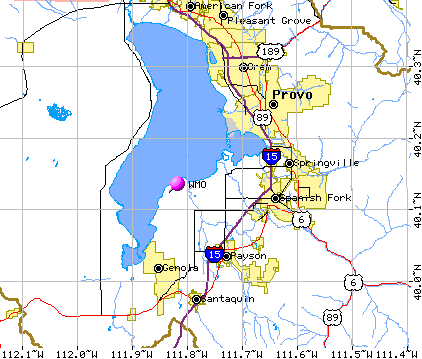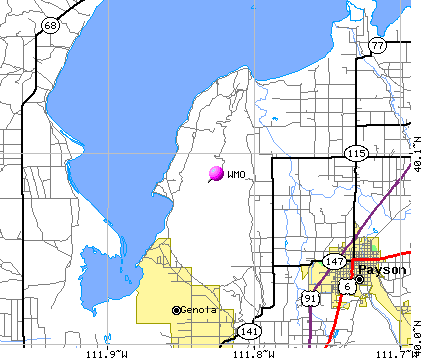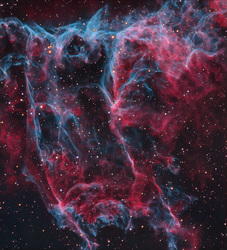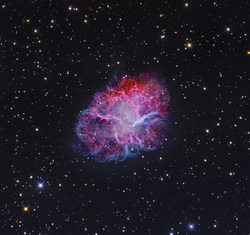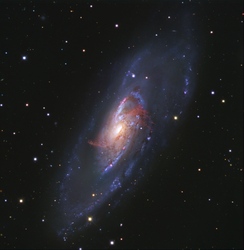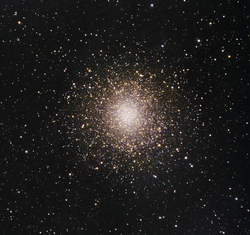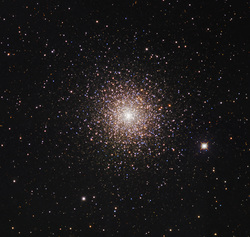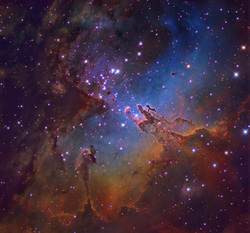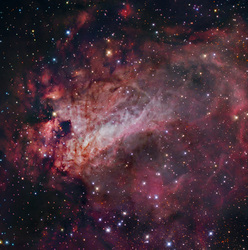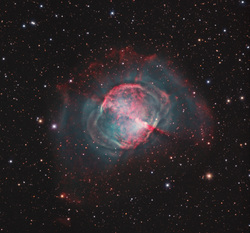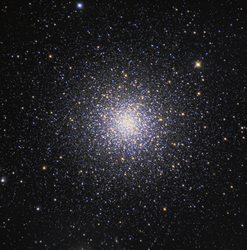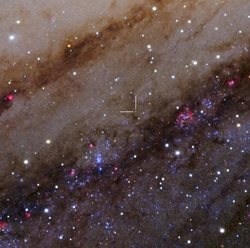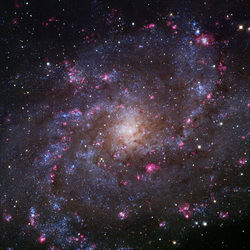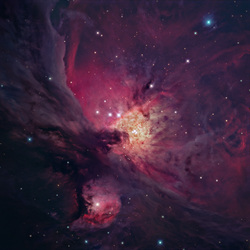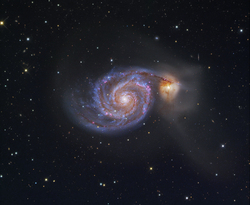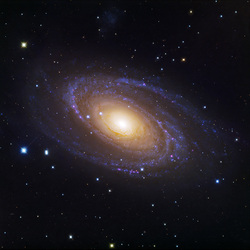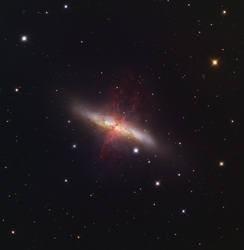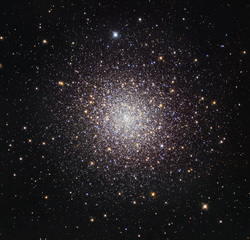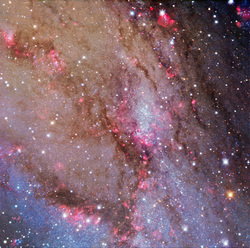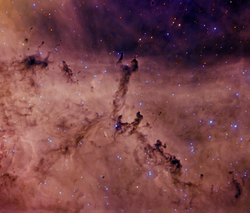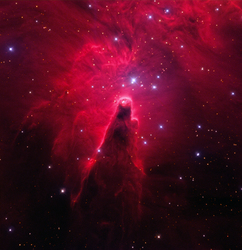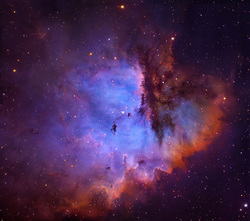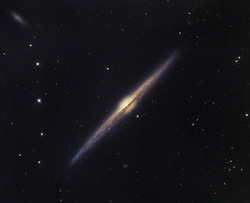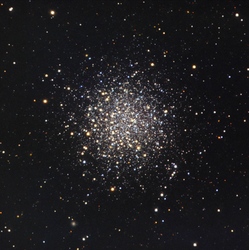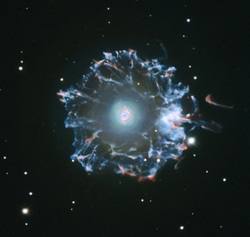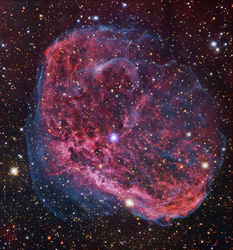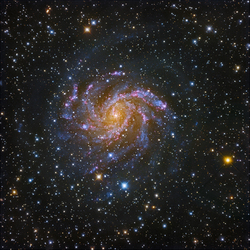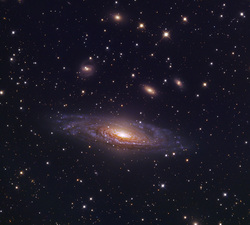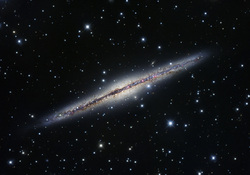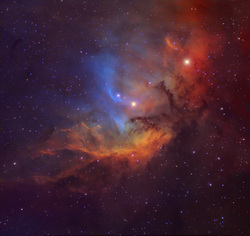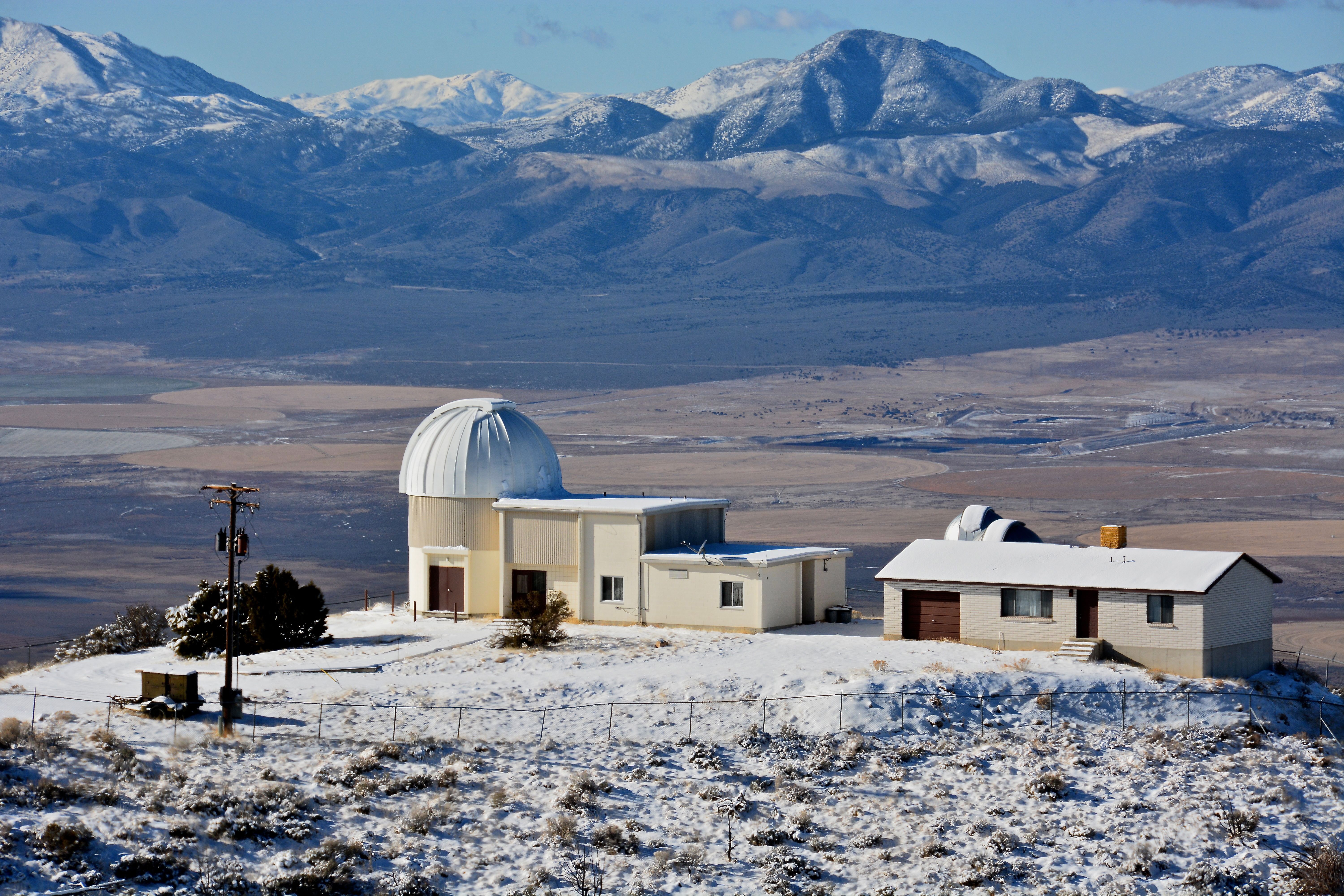 Late springtime view of the West Mountain Observatory after a light snowfall.
Late springtime view of the West Mountain Observatory after a light snowfall.
About the Facility
- Elevation = 6695 ft (2040 m)
- Latitude: 40:05:16 N
- Longitude: 111:49:34 W
The Brigham Young University (BYU) West Mountain Observatory (WMO) is a modern astronomical research facility located approximately one hour from the main BYU campus in Provo, Utah. West Mountain is a lone mountain in the center of Utah Valley on the southeast shore of Utah Lake. The observatory is located slightly west of Long Ridge about a quarter mile from the numerous communications towers seen near the center of the 6850 foot West Mountain. The site itself is far enough to the west of the developed areas along the Wasatch Mountains so that it continues to produce high quality research observations. Overhead and to the west, the sky brightness at West Mountain comparable to that of Kitt Peak National Observatory, while the median seeing conditions are as good or better.
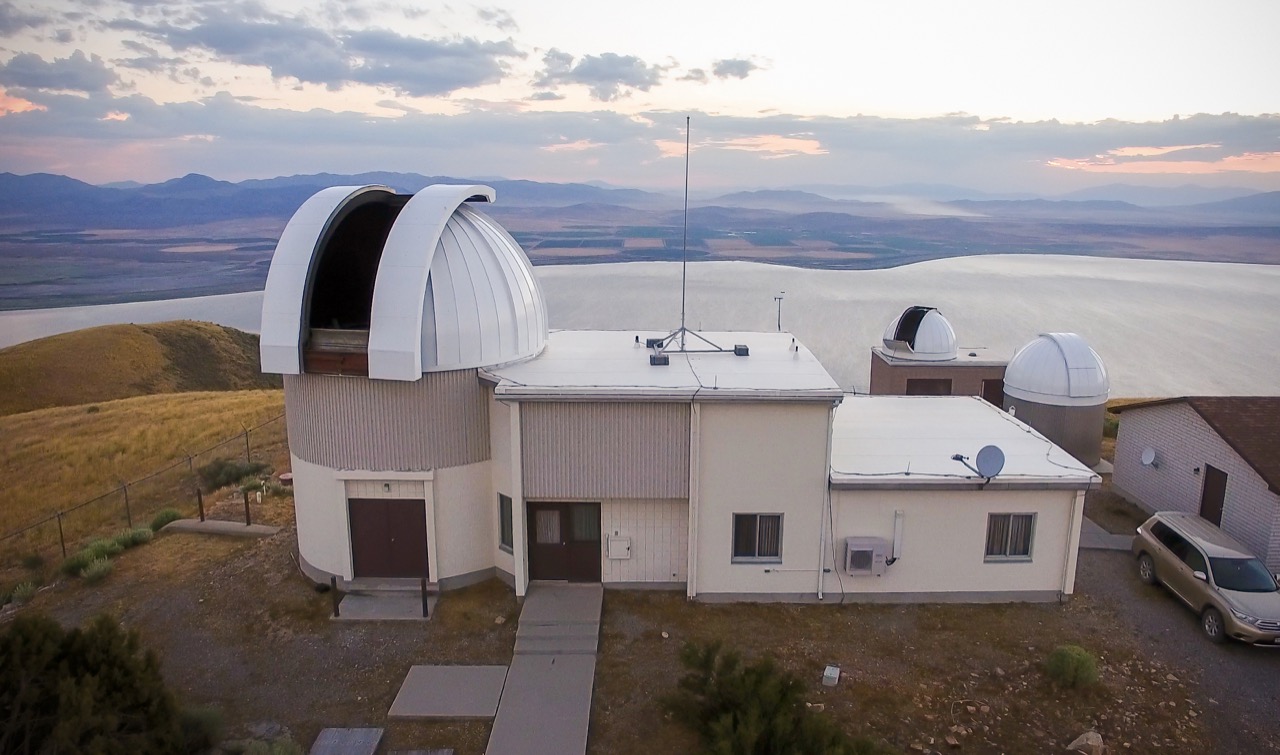 View of the West Mountain Observatory looking to the west near sunset.
View of the West Mountain Observatory looking to the west near sunset.
History
The WMO was built in 1981 when it became apparent that there were no longer opportunities to make dark sky research observations from the Provo campus. The original instrument at WMO was an aging 0.6-m Tinsley reflector. This telescope was purchased in the 1950s and placed atop the BYU Eyring Science Center where it produced high quality photometric observations until local light pollution and encroaching buildings necessitated the move to the remote site at West Mountain. Realizing that the 0.6-m telescope would soon reach the end of its useful life, BYU designed and built the observatory dome and building at West Mountain to house a one meter class telescope without requiring significant modifications to the facility itself. A home was built next to the observatory in 1982 where the resident astronomer lived until 1988. Through the mid 1990s, research and teaching were vigorously pursued at West Mountain. For the next ten years, there were numerous attempts made to upgrade the older telescope. While these were generally successful, it was also apparent that the 0.6-m telescope would not be suitable for making long, guided exposures without making a large investment to replace the telescope mount. It was apparent that this upgrade would be comparable in cost and scope to obtaining a larger replacement telescope. In 2006, the BYU astronomy group was awarded a National Science Foundation PREST (AST 0618209) grant to upgrade the main telescope at WMO. In the middle of 2009, construction of the new DFM Engineering 0.91-m f/5.5 Ritchey-Chrétien reflecting telescope for WMO was completed. The telescope was installed in the main dome in late August of 2009 and regular research observations commenced the next week.
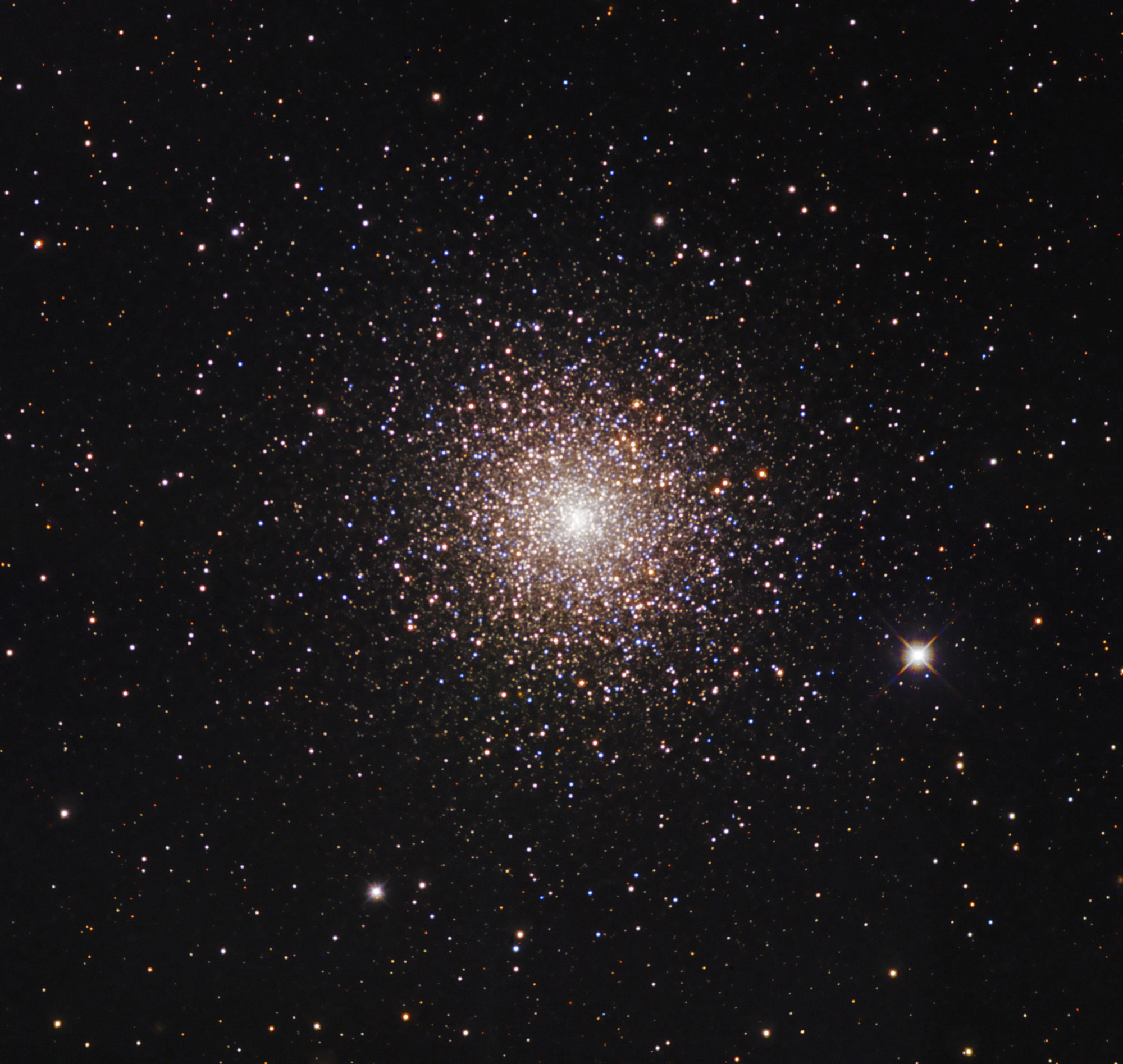 First light image of M15 with the DFM 0.9-meter f/5.5 Ritchey-Chrétien telescope at the West Mountain Observatory - August 2009.
First light image of M15 with the DFM 0.9-meter f/5.5 Ritchey-Chrétien telescope at the West Mountain Observatory - August 2009.
Extensive work by Dr. Michael D. Joner along with internal and external collaborators has established that WMO is an excellent photometric site. Typically, 60 nights per year are suitable for all-sky photometry. An additional 100 nights per year can be used for spectroscopy and differential photometric work. All-sky photometry furnishes a stringent test for photometric site quality and West Mountain has proven to be an excellent location for astronomical research that is still convenient to the main Provo campus. Furthermore, WMO has been shown to provide both graduate and undergraduate students with experiences at a working research observatory that are comparable to what they could get at other major observatories around the world
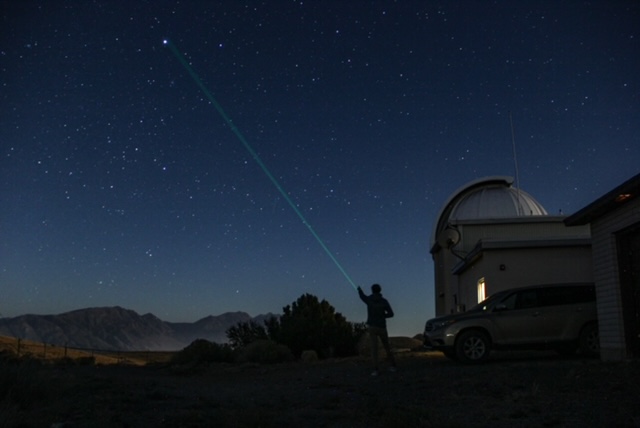 Student pointing out Sirius from the West Mountain Observatory.
Student pointing out Sirius from the West Mountain Observatory.
The Site Today
The dome visible on the south end of the building is 7 meters in diameter with a slit that is 1.3m wide. The large dome on the main building is the location of The DFM 0.91-meter f/5.5 Ritchey-Chrétien reflecting telescope. The smaller round building and dome house a 0.51-meter RCOS reflector mounted on a Mathis Systems fork mount. The small rectangular building and dome contain a 0.32-meter RCOS optical tube mounted on a Planewave L-350 mount. The house to the north is the resident observer's former quarters. The observatory itself contains a computer room, a local area network, an observing room with a window into the dome, several work areas, a small library, kitchenette, lavatory, living space, and two dorm rooms, each of which has two beds. The observatory and house together can sustain up to eight people (a bit crowded) for an extended observing run.
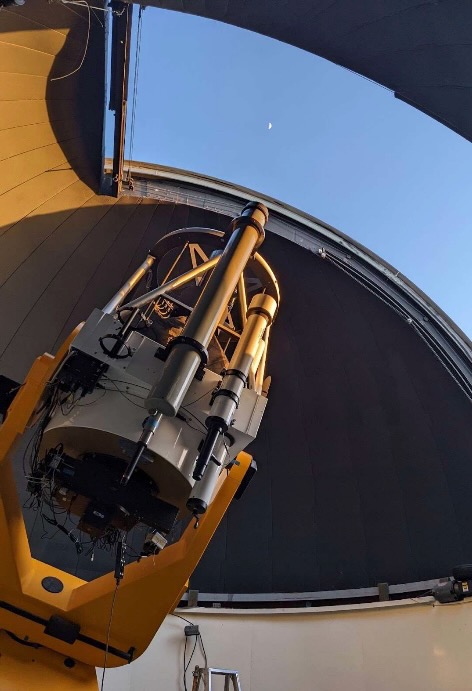 The DFM 0.91-meter f/5.5 Ritchey-Chrétien telescope at WMO.
The DFM 0.91-meter f/5.5 Ritchey-Chrétien telescope at WMO.
The largest nearby town is Payson with a population of about 10,000. The communities of Genola to the south and Benjamin to the east are agricultural areas with low populations. Utah Lake borders the west and north. There is very little population west of the lake for hundreds of miles and the skies are especially dark in that direction. Although the population along the Wasatch front is growing, most of this growth is to the north. Zoning to the south and east of the observatory and the lake on the north and west ensure that the site will remain adequately dark for the foreseeable future.
Also please take a look at the images shown below. These will give you an idea of the quality of the observing at the West Mountain site. Most of these images were made from the highest quality data frames from various projects undertaken at WMO since 2009.
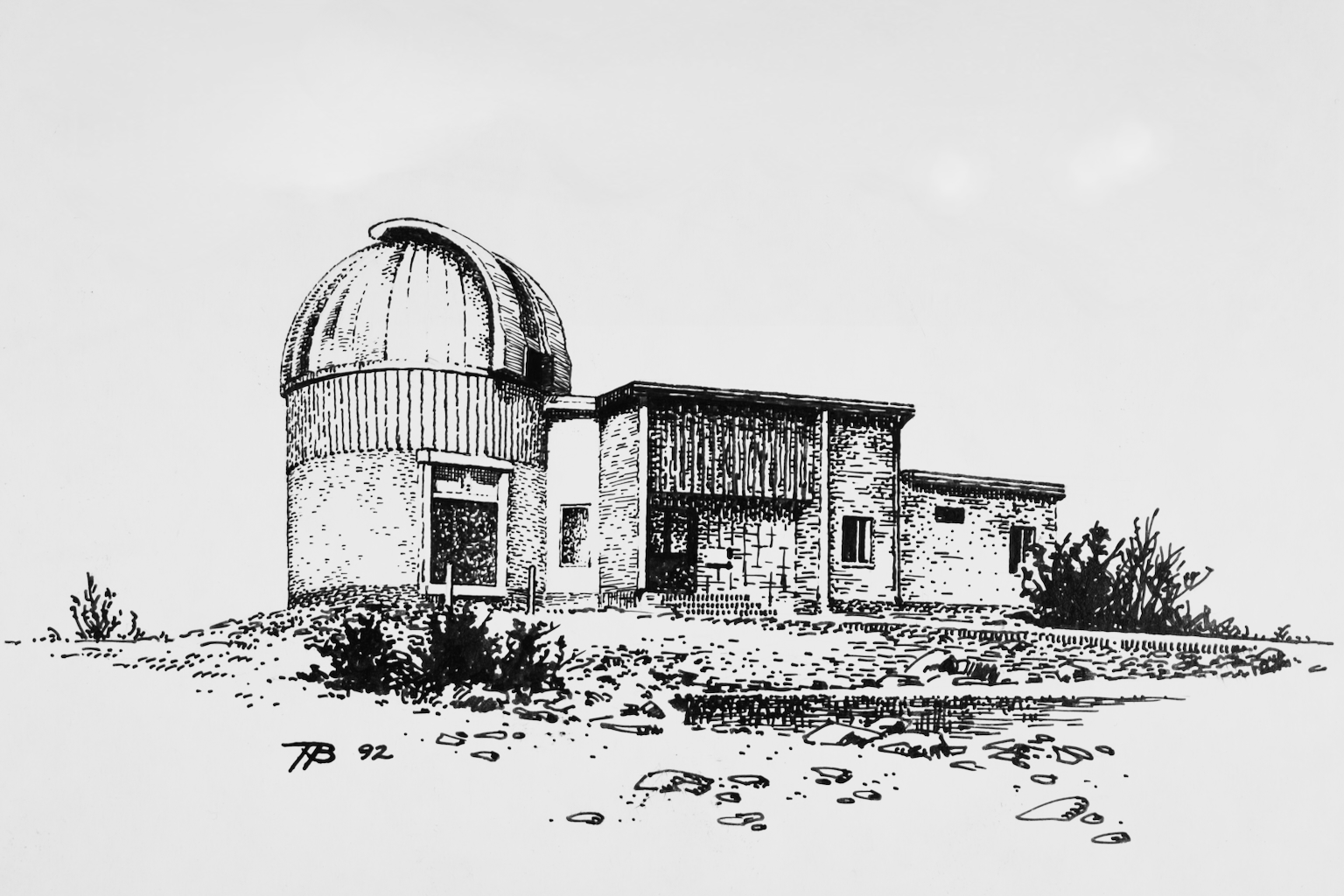
Driving Directions
In general the observatory is not open to the public. It is a research facility and is often in use when the road is passable. When driving up the mountain to see the observatory from outside the gate, a vehicle with good ground clearance is recommended. The road is not well maintained and we take no responsibility for anyone traveling up the road to the observatory.
The easiest route to the mountain is through downtown Spanish Fork, UT. Getting off I-15 you will head south toward downtown. At the third traffic light you turn right. This road is 400 North in Spanish Fork. It will go toward the mountain for some distance. After a couple of miles you will come to a four-way stop at Lake Shore. Continue straight and the road will take a sharp right turn after another couple of miles. Take the first left immediately after the sharp right. The sign will point toward Lincoln Beach. Follow this road out to the base of the mountain. As you parallel the base of the mountain you will see a series of telephone poles to your left. The wires will then cross over the road to your right. At the second telephone pole on your right turn left onto the gravel mountain road. It is then a rough, bouncy trip for 5.5 miles up to the observatory. The main road will end at the observatory gates.
